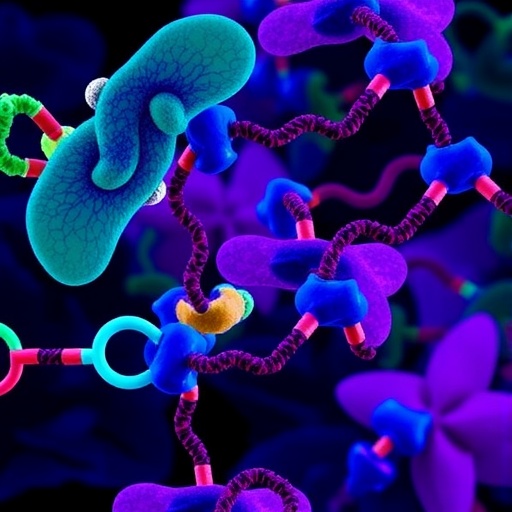In a groundbreaking study published in BMC Complementary Medicine and Therapies, researchers explored the potential synergy between rasagiline, an established treatment for Parkinson’s disease, and Pueraria radix, a traditional herbal remedy. The research has ignited considerable interest in the scientific community due to its implications for enhancing therapeutic strategies for patients suffering from this debilitating neurological disorder. By examining the interaction between these two substances in in vitro models, the team conducted an in-depth analysis that could redefine how Parkinson’s disease is approached from both modern and traditional medicinal perspectives.
Parkinson’s disease, characterized by the degeneration of dopamine-producing neurons in the brain, significantly diminishes motor functions, leading to tremors, stiffness, and balance issues. Current pharmacological interventions, primarily focused on dopamine replacement therapies, have been associated with various side effects and diminishing efficacy over time. The investigation into Pueraria radix, a plant known for its antioxidant and neuroprotective properties, signifies a crucial step towards a more comprehensive, multimodal treatment approach that might mitigate some of the limitations seen with conventional drugs.
The researchers, led by prominent scientists including Huh, Kim, and Lee, utilized advanced cellular assays to evaluate how rasagiline interacts with components derived from Pueraria radix. Their findings suggest that the integration of these two treatments could potentially enhance neuroprotection, reduce oxidative stress, and improve the overall efficacy of treatment regimens for Parkinson’s disease. This could lead to a paradigm shift in therapeutic strategies, urging clinicians to consider herbal supplements alongside conventional treatments.
The study also delves into the cellular mechanisms at play, explaining how rasagiline primarily functions by inhibiting monoamine oxidase B, thereby increasing dopamine levels in the brain. Meanwhile, Pueraria radix is rich in isoflavonoids and other phytochemicals, which exhibit neuroprotective effects by mitigating oxidative damage and supporting cellular health. The complementary actions of these substances may offer a dual approach that not only addresses symptoms but also tackles the underlying neurodegenerative processes.
Additionally, the research highlights the importance of conducting further investigation into the safety and efficacy of combining rasagiline with Pueraria radix in clinical settings. While initial results are promising, the need for rigorous clinical trials cannot be overstated. These trials should not only evaluate the therapeutic outcomes but also closely monitor potential side effects or interactions that could arise from the concurrent use of these treatments.
Both sides of the research reveal insights into patient outcomes and quality of life improvements. Patients often report that managing Parkinson’s disease is not solely about controlling motor symptoms; the psychological components, including anxiety and depression, also play a significant role in their overall well-being. Complementary therapies like those involving Pueraria radix may also offer relief from these psychological symptoms, thus improving the patient care experience.
Furthermore, the authors emphasize the cultural significance of Pueraria radix in traditional medicine systems, presenting it as a valuable alternative or adjunct to contemporary treatments. This aspect is essential in bridging the gap between Western and Eastern medical practices, fostering a more integrated approach to healthcare that respects and utilizes the rich history of herbal medicine. Researchers advocate for an open dialogue between traditional and modern strategies, debunking the notion that they are mutually exclusive.
Along with highlighting potential benefits, the study importantly addresses the complexity of herbal medicine, which is often viewed with skepticism in scientific circles. The complexities of herb-drug interactions must be approached with caution, and it is crucial that future studies thoroughly examine both efficacy and safety. The research area remains open and ripe for further exploration with great promise for enhancing the treatment landscape for Parkinson’s disease.
The compelling nature of this research cannot be understated. With trends toward personalized medicine and integrative approaches becoming more popular among patients, this study serves as a crucial reminder of the value found in nature. As more individuals look for holistic ways to manage chronic illnesses, this collaboration between traditional plant-based therapies and modern pharmaceuticals may provide pathways for advancing patient-centric care.
In conclusion, the recent study adds to the growing body of literature that seeks to unite Eastern herbal practices with Western medical advancements, tailoring new therapeutic avenues. The understanding gained from this research elevates the discourse on how we can better treat Parkinson’s disease and offers hope to the millions affected by this condition. This interaction between a pharmaceutical compound and a traditional herbal remedy not only encourages further dialogue but also lays the groundwork for transformative clinical practices in the treatment of neurodegenerative diseases.
Overall, the innovative nature of this research urges both clinicians and researchers to rethink their approaches and embrace an era of cross-disciplinary collaboration that may lead to breakthroughs in treatment, potentially changing lives for the better.
Subject of Research: Interaction between rasagiline and Pueraria radix in the context of Parkinson’s disease.
Article Title: Interaction between rasagiline and Pueraria radix in in vitro models of Parkinson’s disease.
Article References:
Huh, E., Kim, J.H., Lee, S. et al. Interaction between rasagiline and Pueraria radix in in vitro models of parkinson’s disease.
BMC Complement Med Ther 25, 409 (2025). https://doi.org/10.1186/s12906-025-05154-9
Image Credits: AI Generated
DOI: https://doi.org/10.1186/s12906-025-05154-9
Keywords: Parkinson’s disease, Rasagiline, Pueraria radix, Neuroprotection, Herbal medicine, Integrated treatment, Oxidative stress, Clinical trials, Traditional medicine, Holistic care.
Tags: advanced cellular assays in medical researchantioxidant effects of herbal supplementsBMC Complementary Medicine and Therapies study findingsdopamine replacement therapy limitationsin vitro models for Parkinson’s researchmultimodal approaches to Parkinson’s treatmentneuroprotective properties of Pueraria radixParkinson’s disease motor function improvementParkinson’s disease treatment strategiesRasagiline and Pueraria Radix interactionssynergy between modern and traditional medicinetraditional herbal remedies for neurological disorders




